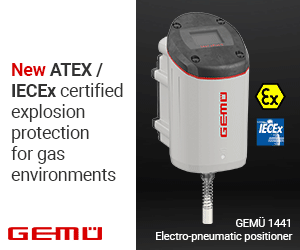The Risks of Static in Hazardous Areas
When we refer to electrostatic discharge as an ignition source, like many other sources it is not tangible for the operator to see, smell or hear. This characteristic of static electricity can unfortunately promote an attitude of “it can’t happen to me”.

Although the generation and accumulation of static electricity is invisible and discrete; it holds a very real possibility of a potential discharge igniting combustible atmospheres. Because static accumulation occurs at the “atomic level” it is naturally difficult to visualise how and why static electricity is a hazard in industries where flammable and combustible products are regularly processed. While in everyday life static electricity is generally regarded as a nuisance, in hazardous process industries, its effects can be devastating. Incidents that have occurred globally are a testament to that, and mitigating against such risks is critical for loss prevention of business continuity, workforce and plant assets. Discharges of static electricity have been identified as the ignition source for a broad range of processes that cut right across a wide selection of industry groups. It is as potent as sparks resulting from mechanical and electrical sources, and yet, it is often underestimated, either due to a local of awareness of the risks it poses or because of neglect and/or complacency.
One of the biggest competitors for any ignition source that cannot be seen, touched or heard is ‘do nothing’. Newson Gale actively generate case studies and white papers via the Knowledge Centre on our website, and deliver training to raise awareness of static electricity as an ignition source to highlight the risks of a discharge. Health and safe professionals, either as decision makers or operators should have an appreciation of the risks involved. The practical recommendations by Newson Gale are based on internationally recognised codes of practice and should be considered to remove the fire and explosion risks static represents for operations.
Despite the ever-present dangers, by eliminating the accumulation of charge and the potential for an uncontrolled electrostatic discharge, the resulting ignition risk is eradicated. The primary consideration should be to source a grounding solution that provides the best fit for your objectives. It is important that users not only understand the risks but also are accommodated with a practical solution fit for their business and application needs. The more steps taken to safeguard personnel and protect plant assets alike against an ignition source, the more likely static will be controlled in a safe, repeatable and reliable way.
Ensuring that all process equipment and personnel involved in the transferring of hazardous materials are bonded and grounded to a verified earth is the main preventative cause of action. Providing a low resistance path to ground for the electrostatic charges to dissipate eliminates the threat. This can be achieved using clamps and cables, but integrity of the earthing network and sufficient ability of the verified earth to dissipate static charge is critically the responsibility of the operator.
Of course, recognition of the hazard is only the first step. Regular static hazard awareness training combined with grounding equipment that displays compliance with industry codes will go a long way to eliminating fires or explosions caused by static electricity. A HAZOP risk assessment report will identify hazards, evaluate those associated risks and provide guidance on the subsequent control of the hazards.
To help control these risks, Newson Gale offers a wide range of static grounding and bonding equipment which is made to provide optimum safety in explosive atmospheres for a variety of process applications. The Newson Gale range prevents static charge accumulation by using practical and innovative design, and ensures effective static control on three levels – grounding and bonding clamps, visual verification systems and interlockable control systems.






























































































































